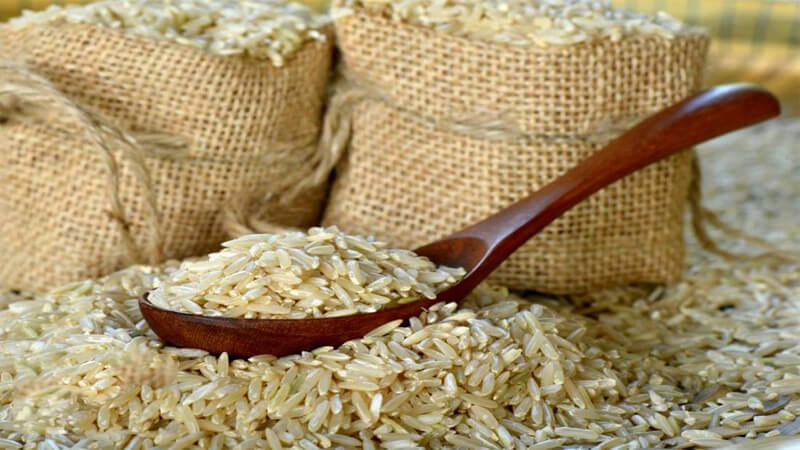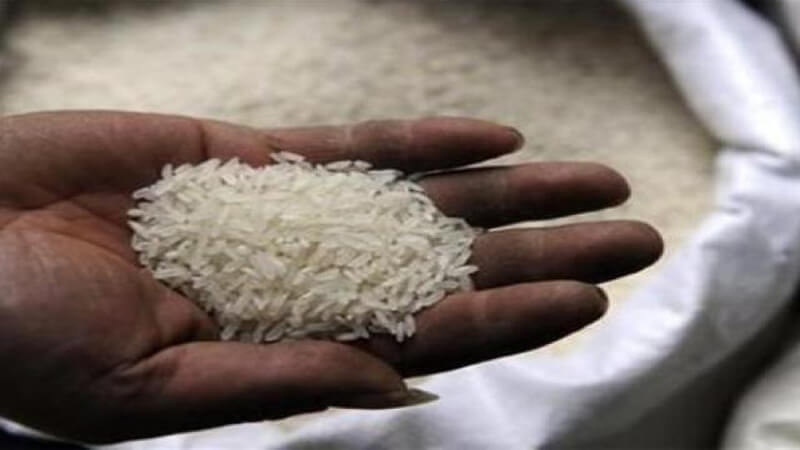Choosing the right rice to eat daily that suits your family’s taste and budget can be a daunting task for many. Our experience has shown that the following types of rice should be avoided to protect your family’s health, and here’s why:
1 Moldy Rice
 Moldy Rice
Moldy Rice
Moldy rice is caused by the growth of Aspergillus flavus, which occurs when rice is stored in high humidity conditions. This toxin cannot be completely eliminated by rinsing or cooking at 100°C. Aspergillus flavus produces aflatoxin, a naturally occurring mycotoxin. Additionally, rice that has been purchased and stored for an extended period may also become moldy.
When rice becomes damp, it changes from white to an off-white or dull yellow color. Over time, it will develop a noticeable green mold, and an unpleasant odor will be noticeable. People who consume moldy rice or are poisoned by acute aflatoxin will experience nausea, jaundice, liver pain, digestive bleeding, and possibly death (a dose of 10mg can be fatal). Prolonged consumption may lead to cirrhosis, liver cancer, and stomach cancer.
2 Bleached Rice
 Bleached Rice
Bleached Rice
Bleaching rice involves using chemicals and abrasive methods to restore the natural white color of the grain. Commonly used chemicals include and other bleaching agents such as oxalic acid, Javen water, and sodium sulfite. Rice bleaching only occurs when rice wholesalers have stockpiled moldy or poor-quality rice that has discolored and then send it back to the rice mill for processing.
With bleached rice, the grain cooks faster and expands to two to three times its normal size due to the chemicals used. For example, 10kg of chemically whitened rice will cook up to be the same amount as 20kg of untreated rice. If poisoned by consuming this type of rice, one may experience vomiting, dizziness, and diarrhea. Over time, it can lead to liver and kidney failure and even cancer.
Therefore, to ensure you are buying fresh rice, pay close attention to its aroma. Rice treated with whitening chemicals will have an intense fragrance, whereas naturally fresh rice will have a subtle, pleasant scent.
3 Over-milled and Polished Rice
 Over-milled and Polished Rice
Over-milled and Polished Rice
Over-milling and polishing are processes that remove the rice husk and then further refine the grain. A small amount of water is sprayed onto the rice to remove the remaining rice bran, after which the grain is dried. Over-milled and polished rice has a very appealing appearance, and the cooked rice is sticky and tasty.
Many people believe that rice with uniform, shiny white grains and a fragrant aroma when cooked enhances the taste and is healthier. However, according to PGS.TS Nguyen Xuan Ninh, a nutrition expert at Medlatec Hospital, over-milled and polished rice loses its , , and , retaining only the starch core. While it may taste good, it will leave you hungry soon afterward, leading to overeating and fat accumulation due to the high starch content.
4 Rice with Added Flavoring
 Rice with Added Flavoring
Rice with Added Flavoring
This type of rice is treated with chemicals containing cadmium and phosphine, a pest control agent, to prevent mold and insect infestation. It is also infused with fragrances such as pandan, fresh rice, or coconut to enhance its appeal. The reason for this treatment is either to mask the fact that the rice has become moldy during storage or to elevate its perceived quality and price.
Rice treated with chemicals and flavorings typically has a shiny white appearance, and upon closer inspection, you may notice some yellow grains in the bag. When cooked, it initially emits a pleasant fragrance, similar to sticky rice, but over time, it develops a pungent odor that dissipates. The cooked rice is also fluffy and crumbly, unlike regular rice, which is soft and sticky.
The preservatives used in this type of rice contain cadmium, which can cause kidney failure. Chinese-made insecticides, often used as a spray on rice bags, contain phosphine, which can cause respiratory poisoning and bone softening if exposed for extended periods. Regular consumption of rice with added flavorings can negatively affect your health, particularly your liver and kidneys. Furthermore, some of these additives may stimulate your taste buds and lead to addiction.
How to Choose Delicious and Healthy Rice
 How to Choose Delicious and Healthy Rice
How to Choose Delicious and Healthy Rice
To help you select the best rice for your family, we offer the following suggestions:
- Buy directly from farmers: Purchasing rice from farmers right after the harvest ensures better quality and flavor.
- Opt for reputable brands: Well-known brands have established themselves in terms of safety, quality, and hygiene and have gained the trust of many consumers. However, always check the expiration date before buying.
- Use your senses: Choose rice with uniform, slightly shiny, off-white grains. It should have a subtle, natural fragrance, free from any musty or insect-infested odors. When you chew a few grains, it should taste slightly sweet and fragrant.
Best Practices for Storing Rice
 Best Practices for Storing Rice
Best Practices for Storing Rice
- When buying packaged rice from a supermarket, always check the production date and opt for the freshest batch.
- If purchasing from a local retailer, buy only the amount you will consume in a short period. This way, you avoid the risk of the rice becoming stale or moldy, and you’ll be ready for the new harvest season.
- Rice does not fare well when exposed to moisture, so it is best to store it in airtight containers in a cool, dry place, away from direct sunlight and heat sources, as these can degrade its quality and nutritional value.
These are the four types of rice you should avoid, and we hope this guide has been helpful. Stay tuned for more informative content, and be sure to check out our delicious and rice selections!
Sources: Vietnamnet Newspaper, thoidaiplus.suckhoedoisong.vn

































